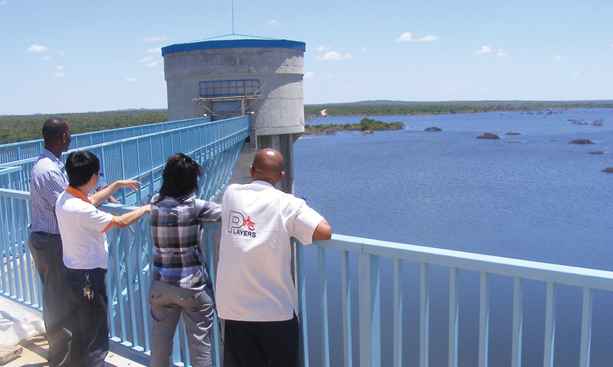The construction of Dikgathong, Shashe, Nitmbale and Lotsane dams brought hope and excitement among the communities living around them not only for source of water but for their potential to turn their economic fortunes around.
Government through the Ministry of Environment, Natural Resources Conservation and Tourism through Botswana Tourism Organisation (BTO) announced that they will ensure that the dams become tourism areas through dam tourism which were to include fishing competitions, canoe, boat racing, sailing, bird watching and game viewing.
Years later nothing is happening around these dams and government has even gone further by banning fishing in some of the dams.
Recently Member of Parliament for Francistown Wynter Mmolotsi took the Minister of Environment, Natural Resources Conservation and Tourism Kitso Mokaila to task on why dam tourism was not allowed in and around dams.
In answering the question, Mokaila said Tourism Master Plans for Letsibogo, Shashe and Thune Dams have been completed and are expected to guide developments that will enable their sustainable utilisation for tourism.
Dam tourism is a lucrative business in most of the countries. A perfect example is in South Africa at the Hartbeespoort Dam in the North West Province. The Hartbeespoort Dam, surrounded by the majesty of the Magaliesberg mountain range, is a popular destination for weekend getaways or day trips. All water sports may be enjoyed including para-sailing, windsurfing, water and jet skiing.
Dikgathong Dam
This is the country’s the largest dam in with a water holding capacity of 400 million cubic litres with a surface water spreading out for roughly 10 km or more.
Its completion brought excitement to the people of the SPEDU region who are facing economic hardships due to the closure of the BCL Mine. The mine has long been closed but very little activity has been noted with regard to developing tourism around Dikgathong and Letsibogo Dams as alternative employment and revenue generator.
One of the planned developments around the dam was Hotels and lodges as well as luxurious restaurants including a leisure park.
Dikgatlhong dam is located at the confluence of the Shashe and Tati rivers and straddles two districts; the Central and the North East. The dam wall is located on the Shashe River downstream of its confluence with the Tati River and approximately 4 km upstream of its confluence with the Ramokgwebane River.
Shashe Dam
With government struggling to diversify the economy of the second city, Francistown, which has been relying of mining, Shashe Dam offers another opportunity to turn things around. Every year the hopes of communities living around the dam have been raised only for them to be crushed like an ice block.
Last year their hopes were raised again when it was announced that the dam was opened for tourism with development of lodges, campsites, cycling, horse riding and fishing facilities, expected to attract both local and international tourists. To date nothing has come of that promise. No stone or sand has been shifted as part of that development.
The then President, Ian Khama unveiled the plaque to mark the start of a journey towards revamping Shashe dam, last year just when his reign was coming to end.
Ntimbale Dam
While BTO was spending millions of Pulas on leisure tourism, which benefitted only a few like Race for Rhino and Makgadikgadi epic, the people of North East looked with anxiety as business opportunities passed by.
Since its completion, BTO has been informing the civic leaders in the area that they were developing a tourism master plan for the dam. The plan is still being developed 10 years later.
